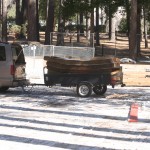We at the council are looking for a fire safe future that endures. In more popular terms, we seek a sustainable future, one that involves successful community action that can easily continue for generations, providing both fire safety and a healthy forest. We think this is possible.
Perhaps our biggest problem is how fire prevention funding is driven by fires. When we go years without a big fire in Southern California, fire falls off most people’s radar. Consequently, elected officials consider it a low funding priority.
Besides, regular fuel reduction and regular exercise share two similarities — both are very effective and very boring.
Without fuels work, vegetation builds and is followed eventually by drought, and followed inevitably by catastrophic fire. Everyone is alarmed, money is allocated, fuels work is done, and the memories fade and the cycle repeats.
How do we get out of this cycle? Public education is one way — the more people in high fire areas know about fire and what they can do to prevent it, the better. I hope that someday everyone in the mountains will know as much about fire as they do about the dangers of smoking. We also need good memories. We must not forget past fires, nor what caused them.
An aware and active public is essential, no matter what other policies we are likely to develop. But an additional way we can go is to set up a self-financing system that continually reduces the fire threat and is outside the government funding cycle.
Part of our success at the council has been our ability to get large grants to help homeowners abate their properties. As you would expect in these times, funds are shrinking. This year we will receive a third of what we received last year in our main grant.
It’s nothing personal to us, it’s just the way things are going for the federal budget as a whole. Forest Service fuels funds are also dramatically reduced. What if the community here could self-fund all the work that is needed to stay fire safe?
A solution may lie in using what we now consider forest waste to produce valuable energy. This is sometimes referred to as cogeneration, but is more aptly called biomass utilization. All our excess biomass — needles, leaves, dead shrubs and trees — has potential energy content.
Over the years people have talked about using it locally but the economics and technology just didn’t work. Now we think they might. The economics improve every time there is an increase in the price of oil, driving up the cost of electricity and transportation. On the technology side, companies have continued to develop and improve small scale units to turn biomass into electricity.
Of course, environmental questions need to be answered, but protective solutions are already in practice elsewhere so I don’t see those as insurmountable.
The council will spend this year studying the possibility of setting up such a unit on the hill. The numbers may or may not work out to allow us to move forward immediately, but I am sure that at some point they will.
The sale of the electricity generated by our own biomass could pay for some or all of needed fuel reduction work in and around our communities. And most importantly, along with the right agency and public support, it would be mainly self-sustaining. We would have a fire prevention system built to last.










